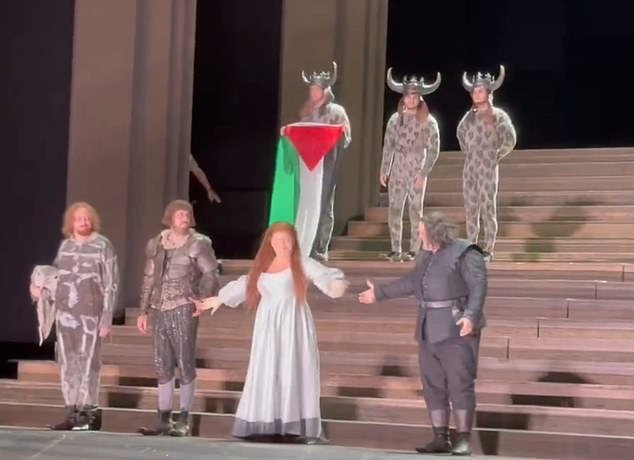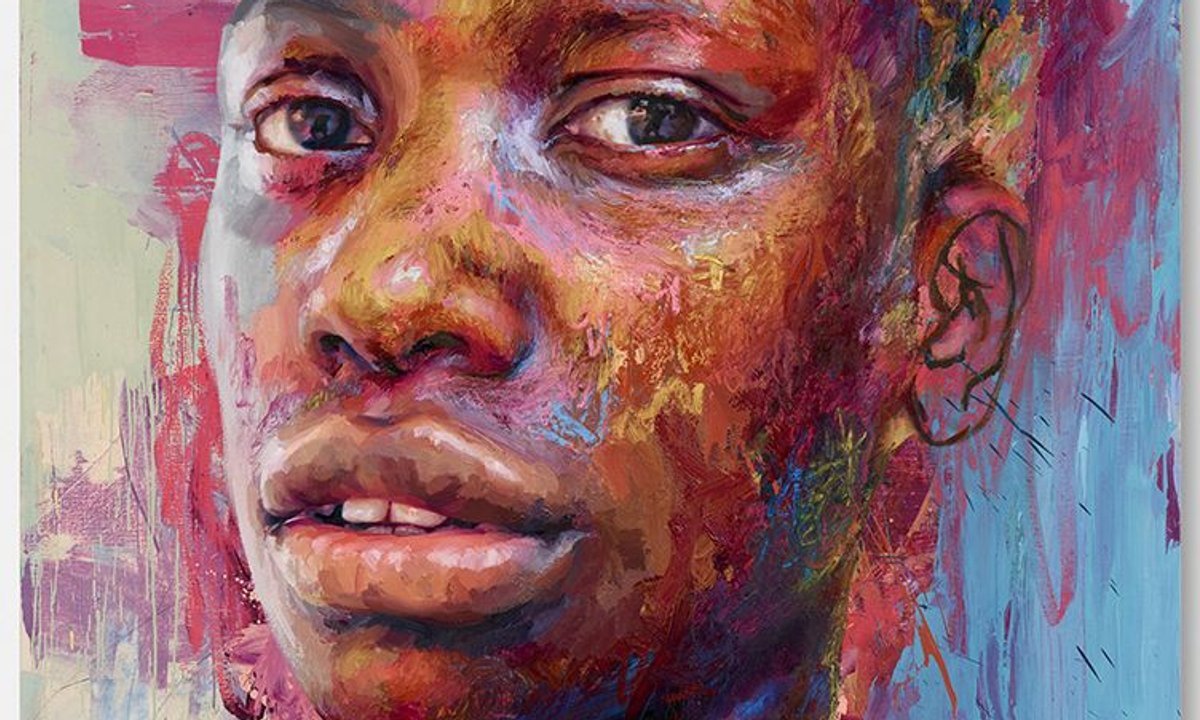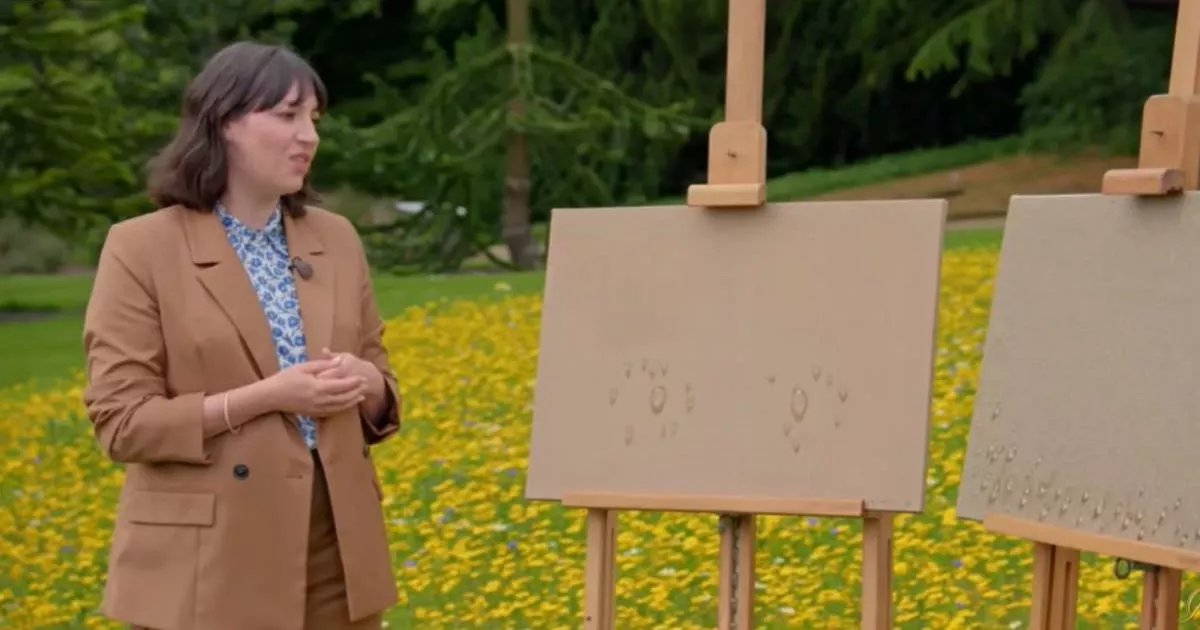Artists have painted self-portraits since at least as long ago as 1433, when Jan van Eyck painted a man with a severe gaze in a red headdress, generally agreed to represent the creator himself. That same artist, as soon as the next year, may have inaugurated what would become a venerable tradition: artists inserting self-portraits into renditions of other subjects, whether contemporary or historical.
These paintings sometimes create head-scratchers in which a reflective surface seems to show what should be the very space, outside of the painting, that the viewer is occupying. They sometimes anachronistically insert themselves into events that happened long before the artist was on the scene. They sometimes show the artist paying tribute to the subject of the painting, or guiding the viewer’s attention to a specific aspect of the scene being painted. And they sometimes constitute sly messages from the artist to the viewer.
Here are 10 examples of artists who inserted themselves into the very scenes they were painting.
1. Jan van Eyck, The Arnolfini Portrait (1434)
Jan van Eyck, The Arnolfini Portrait (1434). Photo: Wikimedia Commons.
One of the best-known examples of this phenomenon is the figures who enter the room where Giovanni di Nicolao di Arnolfini, an Italian merchant working in Bruges, stands with his wife (whose identity is uncertain), raising his hand in greeting.
Jan van Eyck, The Arnolfini Portrait (1434). Via Wikimedia Commons.
Two men are seen in the convex mirror at the center of the painting. One of them also raises his hand in greeting and wears a red chaperon, a fashionable turban-like hat which suggests he is the same person as the man wearing the same garment in what is most likely that 1433 self-portrait that inaugurated the genre.
2. Sandro Botticelli, Adoration of the Magi (1475)
Sandro Botticelli, Adoration of the Magi (1475). Via Wikimedia Commons.
Created by Italian Renaissance master Sandro Botticelli to decorate a chapel in Florence, this work shows the biblical scene in which three kings pay tribute to the newly born Christ. This was a popular scene for artists, who used it as an excuse to paint precious materials and rich, stylish clothing. On the scene are prominent members of the Medici banking and art patronage clan, as well as the man who commissioned the work, Gaspare di Zanobi del Lama, in a blue robe with white hair at the right, looking out at the viewer.
Sandro Botticelli, Adoration of the Magi (1475), detail. Via Wikimedia Commons.
Similarly making eye contact with us is the artist himself, standing at far right in a golden-brown cloak.
3. Raphael, School of Athens (1509–1511)
Raphael, The School of Athens (1509–11). Courtesy Wikimedia Commons.
As the Renaissance looked back to ancient society for guidance, artists were tasked with paying tribute to the greatest figures from that period. Raphael’s fresco shows a congregation of ancient philosophers, mathematicians, scientists, and the like, with Aristotle and Plato given pride of place at the center. Also on the scene are figures like Archimedes, Heraclitus, Socrates, and Zarathustra.
Raphael, School of Athens (1509–11), detail. Courtesy Wikimedia Commons.
The artist himself, looking out at the viewer, stands next to multi-hyphenate mathematician-astronomer-geographer Ptolemy.
4. Quentin Matsys, The Money Changer and His Wife (1514)
Quentin Matsys, The Money Changer and His Wife (1514). Via Wikimedia Commons.
Matsys shows a man weighing jewelry and pieces of gold as his wife, who leans toward her husband, reads a devotional book. The painting could be said to simply show a scene of everyday life in a bustling city whose economy depended on professionals like him. But by inserting an illustration of Christ and the Virgin Mary into the scene, the artist seems to remind the viewer that there are higher goals than profit. In a small convex mirror in the foreground, we can see a window on to the city of Antwerp as well as the artist at work on the painting, in the same spot we might occupy if standing outside that window, looking in.
5. Michelangelo, The Last Judgment (1536–41)
Michelangelo, The Last Judgment (1536–41), detail. Via Wikimedia Commons.
Renaissance master Michelangelo started painting the Sistine Ceiling at the behest of Pope Julius II when he was in his 30s, between 1508 and 1512. From the outset, it was a difficult commission, and he even complained in a 1509 poem: “My brush, above me all the time, dribbles paint so my face makes a fine floor for droppings!” A glutton for punishment, perhaps, Michelangelo would return to the chapel some 25 years later to paint The Last Judgment above the altarpiece. He was nearly 67 years old by the time it was completed, so we can only imagine his misery. Fortunately, he left us a sign.
One of the more than 300 figures represented is Saint Bartholomew, who holds his own flayed skin as an attribute of his martyrdom. Michelangelo slyly replaced the saint’s face with his own, as if to say “I’m dead lol.” Italian physician and writer Francesco La Cava first realized this and published a book about it in 1925, on the 450th anniversary of the master’s birth.
6. Caravaggio, David with the Head of Goliath (1609–10)
Caravaggio, David with the Head of Goliath (1609–10). Photo by DeAgostini/Getty Images.
In the biblical tale, a young shepherd named David employed his slingshot to kill the giant Goliath, who stood some 10 feet tall and had dared the Israelites to send someone to fight him. But the tale took on a new level of emotional complexity when painted by Michelangelo Merisi da Caravaggio, who replaced the giant’s head with his own.
In fact, the painting may have been a way to beg for his own life. The inveterate brawler had, shortly before he painted this canvas, killed a member of an influential family and had a bounty on his own head. Seeking a pardon, Caravaggio may have sent the painting to a patron as a plea for mercy.
In any event, he would somehow die a few years later, never having been pardoned. The canvas continues to captivate: it recently popped up in Netflix’s new series Ripley.
7. Clara Peeters, Still Life with Cheeses, Almonds and Pretzels (1615)
Clara Peeters, Still Life with Cheeses, Almonds and Pretzels (1615). Courtesy Mauritshuis, The Hague.
Still lifes with appealing food and drink were a staple of 17th-century Netherlandish art. This one, by Clara Peeters, an Antwerp-based painter about whom relatively little is known, is a classic of the genre—and in fact, according to the painting’s owner, the Mauritshuis museum, she was one of the first to paint food still lifes. Besides the foodstuffs, it contains pricey items like a gilded Venetian glass and a Chinese dish.
Clara Peeters, Still Life with Cheeses, Almonds and Pretzels (1615). Courtesy Mauritshuis, The Hague.
Peeters inserted herself in two ways: first, on the silver bridal knife, she “signed” her name by painting it carved into the handle. Secondly, and it really takes a minute to see it, her face, complete with white cap, is reflected in the pewter lid of the earthenware jug.
8. Diego Velázquez, Las Meninas (1656)
Diego Velázquez, Las Meninas (1656). Collection of Museo del Prado, Madrid.
Widely recognized as one of the great masterpieces of European art (and certainly one of the most debated), this grand canvas, standing 10 feet tall, is Velázquez’s rendition of the five-year-old Infanta Margaret Theresa, daughter of King Philip IV of Spain, and her entourage. It engages in layers of illusion and reality, and plays with the relationship between “real” space and the space depicted on the canvas.
Diego Velázquez, Las Meninas (1656), detail.
In the middleground, Velázquez himself stands, with paintbrush and palette in hand, as he works at a very large canvas that faces away from the viewer. In the distance, meanwhile, a mirror shows two figures at half-length, possibly representing the king and queen, standing in the same position as the viewer, or possibly representing two figures that appear on the canvas Velázquez is working on.
What does it mean for Velázquez to place himself among such esteemed company? Art historians have posited that he was arguing for an elevated status for artists; a debate raged at the time over whether painting was one of the liberal arts or simply a mechanical art, and this would have taken a clear position.
9. Jacques-Louis David, The Coronation of the Emperor Napoleon I (1806–07)
Jacques-Louis David, The Coronation of the Emperor Napoleon I (1806-07). Via Wikimedia.
Napoleon Bonaparte crowned himself Emperor of much of continental Europe at the Cathedral of Notre Dame, in Paris, before a crowd of 20,000. They included a selection of the highest international dignitaries, including royals, ministers and ambassadors, as well as Pope Pius VII. The Pope was to place the crown on Napoleon, but, reflecting the leader’s bold self-regard, Napoleon seized it and literally crowned himself. So, despite the painting’s title, it actually shows him crowning Empress Josephine.
Jacques-Louis David, The Coronation of the Emperor Napoleon I (1806–07), detail. Via Wikimedia.
Tucked away in a balcony, we can see the artist himself, sketching the scene. The 33-foot-wide painting made such a splash that the painter, Louis Léopold Boilly, even created a painting of the public getting a gander at the canvas at the Louvre, where it now resides.
10. Henri de Toulouse-Lautrec, Au Moulin Rouge (1892–95)
Henri de Toulouse-Lautrec, Au Moulin Rouge (1892–95). Courtesy Art Institute of Chicago.
The legendary nightclub the Moulin Rouge (“the Red Mill,” so named for the landmark red windmill on its roof) thrived during the Belle Époque, the period between the Franco-Prussian War and World War I. Artists, workers, businessmen and tourists came to the fashionable Montmartre district to see scenes like the can-can dance, which was born at the venue, as well as countless innovative performances, some of them scandalous. Henri de Toulouse-Lautrec created famous posters for the club, and here he appears, as the diminutive figure in the center of the background, accompanied by his cousin, physician Gabriel Tapié de Céleyran.
Follow Artnet News on Facebook:
Want to stay ahead of the art world? Subscribe to our newsletter to get the breaking news, eye-opening interviews, and incisive critical takes that drive the conversation forward.






